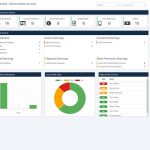Consider how much time we spend drafting reports, meeting notes, and transforming raw data into something actionable. Industry to industry, those hours add up fast — whether it’s a weekly update, quarterly report, or client meeting notes. The time-consuming human process of record-keeping is not only tiring but also error-prone.
Today, artificial intelligence is entering to change that. What used to take hours can now be accomplished in minutes, with automated software that analyzes, summarizes, and indexes information for you. The transition from manual reports to AI-driven summaries isn’t just a matter of saving time; it’s revolutionizing the way teams work, collaborate, and make better decisions.
The Hidden Inefficiency of Manual Reporting
Before the digital revolution, teams relied on handwritten minutes or lengthy Word documents to capture discussions and decisions. Even as a digital method, it was still a lot of work. Someone had to play back recordings, take the minutes, extract relevant information, and read through the output.
It tended to result in:
- A lack of consistency within the information, depending on who was taking the notes, and how much detail was included.
- Slower decision-making because the final summaries took more time to prepare.
- There could be information overload, as it took a lot of time to determine what was meaningful and what wasn’t.
The result was that staff spent so much time handling documents rather than taking action on them. According to studies of productivity, individuals can spend as much as 30 percent of their worktime browsing or summarizing information.
AI-Powered Summaries Enter the Workplace
Artificial intelligence has stepped in as a revolutionary solution. AI-driven tools automatically record, transcribe, and summarize meetings. Hours of talks are encapsulated into structured insights. These tools do more than transcription. They indicate action items, mark important themes, and incorporate sentiment analysis.
For instance, a virtual meeting can have an AI meeting assistant. It can listen in real-time and generate a summarized report within minutes at the end of the meeting. It recognizes the speakers’ roles, breaks down the discussion topics, and provides insights in an organized manner that can be easily read and shared.
Shifting to this kind of automated reporting accomplishes more than just conserving time; it is a basic transformation of how teams generate and disseminate information.
How AI Summaries Strengthen Teams and Workflows
Real-Time Collaboration
AI summaries keep everyone on track. That’s as true for the newest employee as it is for top-level executives. Decisions and next steps, as well as context, are easily grasped even by those who were not present during the meeting. That leads to accountability and transparency throughout the organization.
Consistency and Accuracy
Compared to human note-takers, AI does not forget details or misrepresent statements. These tools are based on sophisticated natural language processing (NLP) algorithms that capture nuance. It can ensure the tone and topic of the meaning are present in the notes.
Time and Cost Efficiency
Automated summarization reduces hours of administrative labor. What used to require an afternoon can now be accomplished in a few minutes. That frees up time to focus on activities that add higher value. Humans can focus on strategy, creativity, and customer relationships while the AI does the tedious work.
More Intelligent Inferences and Insights
AI systems do more than summarize meetings; they also analyze patterns within them. In the long term, they will be able to recognize repeated issues, assess participation levels, and identify productivity patterns. This converts meeting information into a strategic resource instead of mere documents.
Powering Digital Transformation With AI
Digital transformation is not only the use of new technology but also the transformation of processes and mentality. This change is best illustrated in the integration of AI-driven summaries. It is like a bridge between human intelligence and machine efficiency.
Automated meeting notes will be useful in healthcare, logistics, and finance, where accuracy and compliance are essential, and no detail should be overlooked. In artistic and tech fields, they enable teams to focus on creativity rather than documentation.
AI summarization is another resource that supports the hybrid and remote working models. These tools provide a shared source of truth team members can access anywhere. They ensure that communication does not slow down as teams continue to become more distributed.
Picking the Right AI Tool for Your Team
Each organization is unique. The right tool for one might not fit as well for another. You need one that will align with your workflow, data security levels, and integration requirements.
The key factors to consider include:
- Precision in multilingual transcription of international teams.
- Integration with other existing tools such as Slack, Zoom, Google Meet, or Microsoft Teams.
- Customizable access to share data and provide privacy and compliance.
- The available output formats (executive summaries, key bullet points, task lists).
Finding the right AI tool can take serious consideration. You might even need to test a few. However, taking the time to identify which AI platform would be most beneficial to your organization is worth the effort.
The Human Touch in an AI World
Even with the effectiveness of AI, human judgment cannot be replaced. Technology can summarize discussions, but it can never substitute empathy, creativity, and strategic thinking.
With the increasing number of organizations using AI to take notes and summarize them, people are becoming more familiar with these tools. They are also at the leading edge of digital transformation because they make teams more effective.






